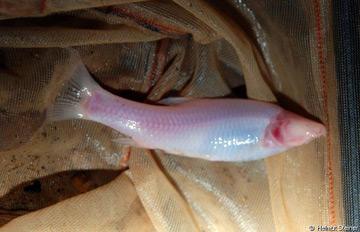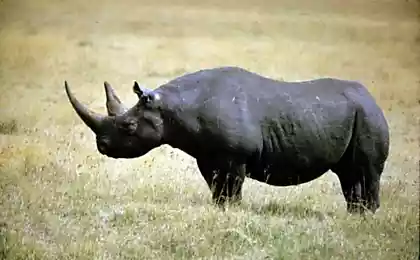1804
Environmentalists from WWF talking about opening a dozen new species in Vietnam

Bat with a devilish good looks, underground blind fish, Pit viper snake with ruby eyes, a bird singing frog - among the 126 species found in the Mekong Basin in 2011 and described in a new report by WWF. Among the 10 new species, the most detailed in the report, there is one belonging to the genus of fruit bats Procellariiformes. He was named in honor of the evil spirit of Beelzebub. This is a very small but formidable bat species found only in Vietnam. The survival of this type of bat, as well as the other two, discovered in 2011, depends on the integrity of tropical forests. But only in the last four decades, 30 percent of the forests in the Mekong Basin have been destroyed.
"Discovery of 2011 confirm that the Mekong - region amazing biodiversity, but many of the newly discovered species already struggling to survive in a rapidly disappearing habitats - says Nick Cox, an expert on types of programs WWF Conservation Mekong basin. - Only nature conservation, particularly the creation and development of protected areas, as well as landscaping economy can protect the new species and give hope for new discoveries in the coming years ».
A new species of fish - "walking catfish» Clarias gracilentus - was found in the rivers of the Vietnamese island of Phu Quoc. This fish can "walk" on the ground with the pectoral fins to stay upright and move serpentine movements. Or dazzling miniature fish Boraras naevus - only 2 cm in length - was found in southern Thailand got its Latin name for a dark spot on the golden calf (naevus - «birthmark»).
Pearly pink fish of the carp family was discovered in one of the tributaries of the Mekong in central Laos. This influx (Xe Bangfai) flows 7 kilometers underground through limestone karst. A resident of caves Bangana musaei absolutely blind. Scientists once attributed to the category of vulnerable kind of restriction of its range.
In the Mekong is home to about 850 species of fish here - the most intense in the world of freshwater fishing. Plans for the construction of a dam in Laos Xaignabouli (also sometimes called Sayaburi - Xayaburi dam) in the mainstream of the Mekong - a serious threat to biodiversity and ecosystem productivity of this "life line" of Southeast Asia - the river, on which depends the life of 60 million people.
"In terms of biodiversity of aquatic ecosystems of the Mekong is second only to the Amazon - adds Nick Cox. - Dam Xaignabouli become an insurmountable barrier for many fish species, leading to their death - as already known and yet to be discovered ».
A new species of tree frog Gracixalus quangi, found in the mountainous forests of northern Vietnam, produces complex sounds that resemble a bird sing. While most of the male frogs croaking attracts females multiple representatives of this kind every time inventing a new tune. Sounds are never exactly the same, and each combination of clicks, whistles and twitter unique.
When it comes to Eastern spadefoot toad - genus of frogs Leptobrachium - eyes do not get tired to enjoy. Among the more than 20 species of this genus there is a huge variety of color. View Leptobrachium leucops, discovered in 2011 in the humid evergreen forests and misty South Vietnam, different amazing black and white eyes.
Among the 21 new reptiles, opened in 2011 - Pit viper green snake with ruby-colored eyes (Trimeresurus rubeus), lives in the woods next to the largest Vietnamese Ho Chi Minh City. This beautiful snake crawls also in the hills of southern Vietnam and Cambodia plateau in the east.
A new kind of the short-python was found in a nature reserve in Myanmar. Scientists could not see the secretive snake more than once despite numerous attempts, so they still can not collect information about its distribution and population status. Nevertheless, there is reason to believe that the python length 1, 5 meters facing the same threats that other kinds of pythons. This loss of habitat and poaching for their meat, skin and sale as a pet.
"Poaching for illegal trade - one of the main threats to the survival of many species of Southeast Asia - says Nick Cox. - To solve this problem, WWF and TRAFFIC launched a global campaign to strengthen the prosecution of smuggling of animals and plants and reduce the demand for rare species ».
The report «Extra Terrestrial» WWF describes in detail 10 new species. In 2011, the Mekong was found 82 species of plants, 13 species of fish, 21 species of reptiles, 5 species of amphibians and 5 species of mammals. The region is located in the territory of Cambodia, Laos, Myanmar, Thailand, Vietnam and the southwestern province of Yunnan in China. Total 1997 1710 new species were discovered and described by scientists in the Mekong Basin.























